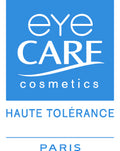THE OPHTHALMOLOGIST'S GUIDE
TOP 20 TIPS FOR SAFE MAKEUP USE
The eyelid and eye surface is an extremely delicate area of your body. Respect it. Always choose products that are safe to use around your eyes and avoid products containing untested or harsh chemicals. Follow these simple guidelines to enjoy a great look without compromising your health:
1. ALWAYS WASH YOUR HANDS before applying makeup.
2. MAKE SURE YOUR FACE AND EYELIDS ARE ALSO CLEAN before applying makeup.
3. If you are a contact lens wearer you need to take extra care when applying makeup. Always remember that CONTACT LENSES COME FIRST! Insert you contact lenses before applying any makeup and remove your contact lenses before removing your makeup at the end of your day. This will prevent any makeup particles from getting trapped underneath the contact lens during insertion which can irritate or scratch the cornea leading to serious infections. It will also prevent damage to the contact lens by makeup removers.
4. AVOID WATERLINING OR TIGHTLINING. Use your lash line as a guideline. Always apply makeup outside the lash line and away from the eye to avoid blocking the openings of the important oil glands on your eyelid margin. These oil-producing Meibomian glands secrete oil that lubricate and protect the eye. Take good care of them as they need to last you a lifetime.
5. USE A WELL-LIT MIRROR with magnification to aid you, especially when applying eye makeup.
6. SHARPEN PENCIL LINERS BEFORE USE.
7. If you need to use an eye drop, apply it 15-30 MINUTES BEFORE applying your makeup.
8. NEVER SHARE your makeup products, even with close friends or family. You wouldn’t want another person’s bacteria contaminating your products and predisposing you to an infection. When it comes to makeup - NOT sharing is caring.
9. REMOVE ALL MAKEUP THOROUGHLY EACH DAY BEFORE GOING TO SLEEP. If not removed properly, eye makeup can cause irritation and red eyes.
10. REPLACE EXPIRED MAKEUP REGULARLY. Look for ‘the period after opening’ symbol on the packaging to guide you as to when to replace your makeup.
11. If you have ACTIVE BLEPHARITIS, CONJUNCTIVITIS, OR STYES, it is essential to GET THIS TREATED FIRST and wait 2 weeks after resolution before restarting eye makeup use. Replace all old makeup products to avoid reinfection.
12. AVOID RETINOL-CONTAINING EYE CREAMS. Retinol is toxic to the oil-producing Meibomian Glands in your eyelids and can lead to chronic dry eye disease.
13. AVOID LASH GROWTH SERUMS CONTAINING PROSTAGLANDIN ANALOGUES (e.g. Isopropyl cloprostenate). It can cause darkening of the eye colour and lid skin, loss of periorbital fat, blurred vision, stinging, burning, and redness of the eye.
14. AVOID LASH EXTENSIONS. The glue used to attach these faux lashes contain volatile organic compounds and formaldehydes which can cause serious allergic reactions. The lashes prevent proper eyelid hygiene and will predispose to infections.
15. DON'T USE TRADITIONAL KOHL OR KAAJAL. It often contains lead which is easily absorbed through the eyelid skin and is toxic.
16. DO NOT GET PERMANENT EYELINER TATTOOS. Studies have proven that the tattoo needling and inks cause permanent damage to the oil-producing Meibomian glands in your eyelids leading to chronic dry eye disease.
17. NEVER APPLY MAKEUP WHILST DRIVING or in a moving vehicle. It increases the risk of sustaining a corneal abrasion and bacterial infection.
18. DO NOT MOISTEN EYE MAKEUP PRODUCTS WITH SALIVA. That’s gross!
19. DON'T USE EXFOLIATING SCRUBS AROUND YOUR EYES. These tiny microbeads can get lodged under the eyelid and even scratch the cornea.
20. DON'T APPLY MAKEUP ON THE DAY OF HAVING EYE SURGERY or an office-based eye procedure. Ask your Ophthalmologist when it is safe to start using eye and face makeup again after having eye surgery. Use fresh, clean products when you do resume makeup use.

